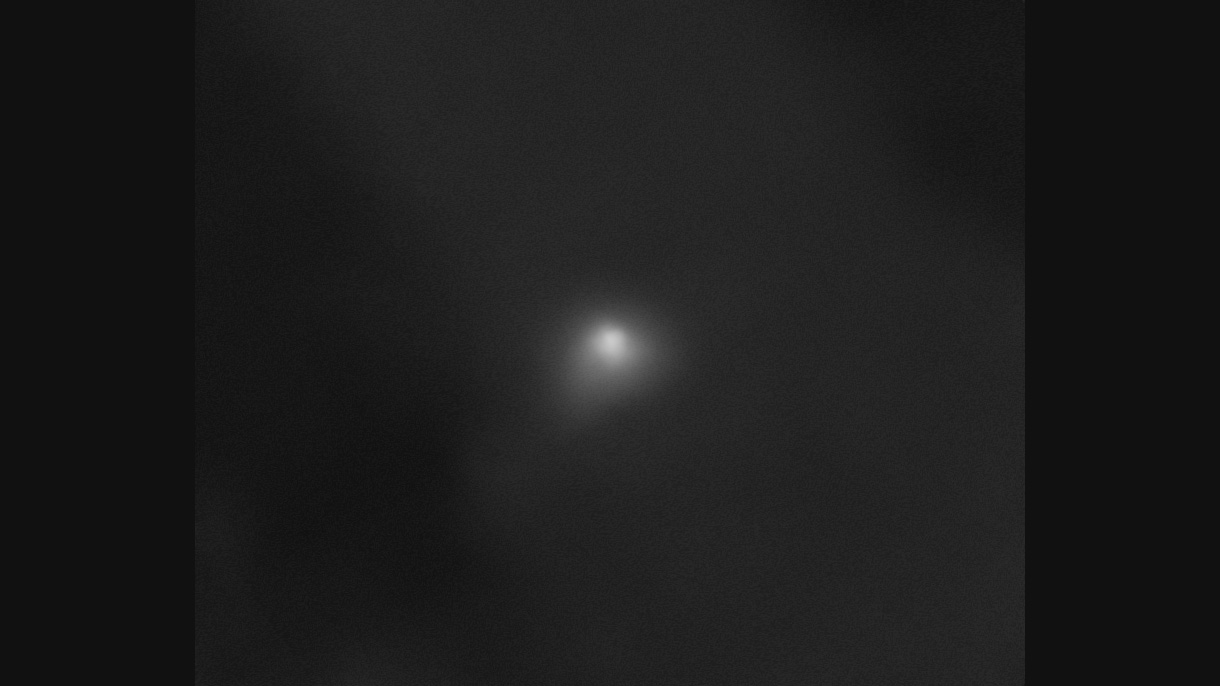The most recent spacecraft tracking and telemetry data were collected March 21 using the Deep Space Network's 34 meter Station 25 at Goldstone, California. The Cassini spacecraft is in an excellent state of health. All subsystems are operating normally except for the issue being worked with the Ultrastable Oscillator. Information on the present position of the Cassini spacecraft may be found on the "Present Position" page at: http://saturn.jpl.nasa.gov/mission/presentposition/.
The Cassini Plasma Spectrometer (CAPS, off since June 2011) was powered back on on March 16 based on the unanimous agreement of the review board at the CAPS turn-on review held on March 8. All went as planned for both the instrument and the spacecraft during the turn-on. The high rail to chassis short internal to the instrument that was part of what prompted it to be turned off last June was not present, and no changes were seen in the bus voltages or currents when the turn-on occurred. On Tuesday, March 20, the high rail to chassis short in the CAPS instrument returned, generating the same condition that existed at the time the instrument was turned off. However, based on the tin whisker model developed by the NESC team, this condition is believed to be understood and is not expected to cause any problems for either the instrument or the spacecraft. The CAPS instrument has been left powered on and is sequenced to operate as originally planned for the 75 kilometer Enceladus flyby coming up on March 27.
Repeating observations this week included two by the Imaging Science Subsystem (ISS) and Visual and Infrared Mapping Spectrometer (VIMS) in the Titan Monitoring Campaign, seven by ISS and VIMS in the Saturn Storm Watch, and three by ISS in the Satellite Orbit Campaign. In the latter, Cassini points toward specific patches of sky near Saturn where small satellites may be found, including some discovered in recent years. Astrometric observations are made of their location in orbit about the planet to refine knowledge of their orbits. These observations can also catch small satellites never seen before.
While the spacecraft was near apoapsis, the Cosmic Dust Analyzer (CDA) made two multi-hour measurements of interstellar dust.
Wednesday, March 14 (DOY 074)
ISS observed the transit of Tethys across Dione for orbit determination purposes.
The Composite Infrared Spectrometer (CIRS) began a 23-hour mapping activity to determine temperatures in Saturn's upper troposphere and tropopause.
Thursday, March 15 (DOY 075)
During the past week, 3191 ISS images and 155 VIMS cubes were generated and distributed.
Friday, March 16 (DOY 076)
Orbit Trim Maneuver (OTM)-312A, an apoapsis maneuver using the Reaction Control Subsystem thrusters, provided Cassini a delta-V of approximately 100 mm/sec, targeting it to the Enceladus-17 encounter coming up on March 27.
CAPS was powered on via realtime command. The power-on activity was successful and the short circuit seen previously from the high rail to chassis was not present.
Realtime commands were sent to update the Sun-to-Saturn vector in the Inertial Vector Propagator.
Saturday, March 17 (DOY 077)
The Ultraviolet Imaging Spectrograph (UVIS) began an 8-hour scan of Saturn's magnetosphere in order to image hydrogen and oxygen.
Sunday, March 18 (DOY 078)
The Magnetometer (MAG) performed a 5-hour calibration using the Science Calibration Subsystem, which measures alignment of the individual MAG sensors.
Cassini passed through apoapsis today, marking the beginning of Saturn orbit #163. At an altitude of 2.4 million kilometers above Saturn and approximately in its equatorial plane, the spacecraft had slowed to 5,493 kilometers per hour relative to the planet.
Monday, March 19 (DOY 079)
UVIS began a 16-hour magnetosphere scan, again imaging hydrogen and oxygen.
Reaction-Wheel Assembly Bias Optimization Tool (RBOT) results were analyzed in the S74 RBOT meeting today, then an Encounter Strategy meeting for Enceladus encounters E-17 and E-18 took place.
JPL Division 33 (Communications, Tracking, & Radar) held a mini-review of Cassini's Deep Space Transponder/Ultra Stable Oscillator test proposal. Several actions were identified to be worked before moving on to the next step.
Tuesday, March 20 (DOY 080)
Just prior to returning to full science data collection, CAPS experienced another high rail short-circuit causing the spacecraft's electrical power subsystem to exhibit the same voltage-imbalanced state it had last June when CAPS was turned off. An anomaly meeting was held, and the decision was to continue as planned based on the current understanding of the phenomenon that is believed to be causing the shorts. The power subsystem design makes it fully compatible with operating in this condition. The decision to turn CAPS off last June was based on not understanding what was causing the shorts.
Eight command files were approved for the Instrument-Expanded Blocks that will be invoked by background sequence S73, which will be uplinked and start execution next month.
The Attitude and Articulation Control Subsystem (AACS) performed a Periodic Engineering Maintenance activity. As part of the routine exercise, Reaction Wheel #3 was powered on, spun up, and powered off again.
AACS executed a Reaction Wheel Assembly (RWA) bias maneuver to adjust wheel speeds; it completed just before turning to Earthpoint.
Radio Science executed a High-Gain Antenna boresight calibration by turning the spacecraft slightly and recording the variations in signal strength seen in the Deep Space Network receivers a one-way light-time (1 hour 13 minutes) later.


































